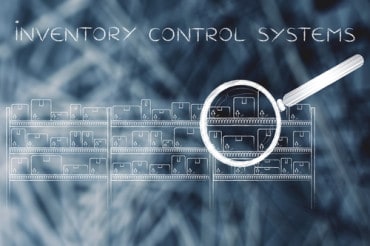
Integration is the only way to ensure that your real-time data is being used at the right time, in the right context, to help people make better decisions.
Exporting .csv files and importing them into another application is last century’s faxes. It might work, but can any company that relies on manual data integration tasks and historical-only analysis work at maximum capacity? No matter how talented, your people are always hamstrung by the inability to work just a little more efficiently, or a little smarter, to gain that edge over the competition.
![Featured Resource: A modern approach to hybrid cloud integration helps CVS turn vision into action [Watch Video Now]](https://no-cache.hubspot.com/cta/default/8019034/a5929c68-13e6-42ec-8ad3-a34cd7838f3e.png)
The importance of integration gets even clearer with companies that have already deployed modern, real-time applications. These applications are inherently complex, spit out a ton of potentially valuable data that is often lost, but are also mission-critical to the company’s well-being. And with more departments within a company wanting access to real-time data, then using discrete platforms to analyze it, the challenge of getting all the data where it needs to becomes an instantaneous bottleneck.
Without integration, these companies aren’t running real-time applications—they’re running several disconnected silos and only know something is going wrong when there’s smoke in the air.
See also: Successful Integration is a Team Sport
A necessity for modern, real-time applications
We define real-time applications as anything that operates within an “immediate” time frame, or at least with low enough latency to feel seamless to the end-user. But modern real-time applications are far more than chatbots and videoconferencing—they’re applications for detecting gas leaks, supply chain failures, or catastrophic downtime.
So, even if your processes for integrating data between your real-time applications are already more advanced than .csv files, there are still enormous missed opportunities to streamline and find unexpected wins through integration.
Real-time applications also require real-time analysis. If you have to take any manual steps to move data between two platforms, or you rely only on historical batch analysis because your IT team needs a few days of slack in order to migrate and merge datasets, you’re no longer doing anything real-time.
Integration is the only way to ensure that your data is being used at the right time, in the right context, to help people make better decisions, whether that’s in providing better customer service, managing your supply chain appropriately or marketing investments that track the way your audience is thinking and feeling right now.
See Also: Center for Automated Integration
Modern applications are too complex to be handled manually. Many real-time applications run on an event-driven architecture, often using Kubernetes and microservices, on a public cloud platform. Most of the inner workings in these deployments are abstracted by design, which means it’s often impossible to make changes in state or even grab data as it flows from one microservice to another manually.
On top of that, real-time applications might need to make changes based on the health or status of a related system. For example, a shopping cart frontend that needs to account for real-time inventory data, or the software responsible for managing a plant floor’s machinery that needs to make immediate process decisions based on the imminent failure of a CNC machine.
Integration is the only way to make these connections between multiple abstracted systems possible, but the challenges only start there. Integration teams need to consider latency, security, and end-user performance from day one to be successful in the long haul.
Integration helps companies navigate a complex talent landscape. Everyone talks about the Great Resignation, but the equation is more difficult for businesses with real-time applications.
There’s a booming demand for development resources on internal projects, such as building new dashboards for business intelligence or customer experience. Still, there’s also the ongoing need to be competitive in fast-moving landscapes. The endless internal vs. external tug-of-war creates development cultures that rely on moving too fast, creating piecemeal solutions, and constantly fighting fires. If developers aren’t happy with what they’re building and don’t feel like they’re solving complex challenges, they’ll move on to greener pastures.
Integration creates opportunities for developers to find a balance between various departments and create “mashups” of data that feel like explorations instead of obligations.
Integration doesn’t have to be difficult
Many companies hesitate on integration, thinking that they have to go all-in on a comprehensive integration solution that impacts every application in their infrastructure. There’s a bit more weight to that fear at the enterprise level, but SMEs have extraordinary flexibility to adopt integration in more tactical places within their business to get more out of their real-time applications.
For example, Integration Platform as a Service (iPaaS) platforms, oftentimes referred to as cloud integration or cloud-based integration platforms, help companies build new integration flows between applications, oftentimes using templates or low-code workflows that reduce the reliance on internal development time. With iPaaS, teams can quickly iterate without having to rely on the “old guard” of enterprise service buses (ESB) or enterprise application integrations (EAI) to get the job done.
And to take the advantages a few steps further, iPaaS platforms can often interact with and manage APIs without the need to combine them from multiple services, which creates low-risk onramps for development teams to quickly mash together real-time data from disparate systems for further validation and improvement.
In the end, the goal of using modern, real-time applications is just that: small improvements to complex infrastructure that influence big decisions. Using integration as the fulcrum on which your company makes the most of real-time data—and gets far, far away from manually moving .csv files—is the key to addressing all of today’s challenges and decisions to be made.
![Featured Resource: A modern approach to hybrid cloud integration helps CVS turn vision into action [Watch Video Now]](https://no-cache.hubspot.com/cta/default/8019034/a5929c68-13e6-42ec-8ad3-a34cd7838f3e.png)







